 Whew. What a journey. I just returned from an arduous trek, blazing a trail thru untamed mountain wilderness of Kentucky. The doctors and lawmen back in Virginia could not help us with catastrophes there. But we enjoyed gifts along the way ~ like when lush moonlight “silvered the woods and river.” And the “hallowed, heavenly magic … a star shower.” The moonbow rose from the mist of the falls, spanning the river, bands of white streaked with red and indigo and pale green, “vivid against the froth of the falls.”
Whew. What a journey. I just returned from an arduous trek, blazing a trail thru untamed mountain wilderness of Kentucky. The doctors and lawmen back in Virginia could not help us with catastrophes there. But we enjoyed gifts along the way ~ like when lush moonlight “silvered the woods and river.” And the “hallowed, heavenly magic … a star shower.” The moonbow rose from the mist of the falls, spanning the river, bands of white streaked with red and indigo and pale green, “vivid against the froth of the falls.”
 But the journey was long. Through springtime teasing with warm breeze but dumping snow at night, “the cold polishing every rock and speck of grass like barley sugar.” Summer with its veil of green protecting us but also hiding danger. And heated “air shimmering like a cast-iron skillet.” Autumn with its canopy of color, treacherous when wet and fallen.
But the journey was long. Through springtime teasing with warm breeze but dumping snow at night, “the cold polishing every rock and speck of grass like barley sugar.” Summer with its veil of green protecting us but also hiding danger. And heated “air shimmering like a cast-iron skillet.” Autumn with its canopy of color, treacherous when wet and fallen.
 I ache with the walking and carrying supplies. My mind and senses cannot rest after months of being alert to any subtle change. Getting lazy in observing allows death to strike. I wonder if I will ever settle, not react to every slight sound. Every variance of breeze or temperature or color of the sky …
I ache with the walking and carrying supplies. My mind and senses cannot rest after months of being alert to any subtle change. Getting lazy in observing allows death to strike. I wonder if I will ever settle, not react to every slight sound. Every variance of breeze or temperature or color of the sky …
But wait. As I rouse, a book slips from my fingers and I sit in my own room. I glance around. Gradually senses adapt as I drift out of story-world reality of A MOONBOW NIGHT and into my 21st-century home.
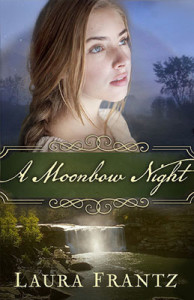
As a reader I love a good story. One that invites turning pages quickly, chasing plot turns with characters that have captured my interest. I want to be so immersed in a book that closing the cover and returning to my time and place is a shock. Laura Frantz writes stories that come alive. A venture she succeeds in every time. For a reader, that is enough to know opening A MOONBOW NIGHT will bring satisfaction.
Frantz creates living, breathing characters. Though this is her fourth novel set in l770-1790 Kentucky, her characters are always fresh, distinct, and seem to emerge perfectly from the era. Not a retread among them.
She places these characters in a time of keeping delicate balances. Frontier living was living on a knife’s edge. Survival was tentative at best. The times demanded one be constantly alert and correctly interpret even the most subtle of things around them. A rapidly-hidden glance. A slight weather shift. A near-indiscernible sound. A barely-there hint of something out of order—a fallen leaf out of season, birdsong gone silent, hoof print with no shoe… Missing natural or human clues left one vulnerable. Death could be sudden—in a rockfall, a storm, gunshot, snakebite.

Much of MOONBOW unfurls as Tempe Tucker or Sion Morgan (with various companions) travel. Sometimes they trek familiar, narrow paths; other times unfamiliar territory, be it tough terrain, rough rivers, forests lost in fog or laced with enemies. Many miles are walked, then backtracked. Yet throughout Frantz keeps the action moving in a setting that some might see as an endless slate of green and wood to forge through. Not once does she revert to lazy repetition.
 With her extraordinary observation and writing skill, every turn of trail and fortune unfolds in a vividly-drawn setting. Much like inhabitants of extreme northern climes have a vast number of words for snow, Frantz finds a seemingly infinite variety of sights, sounds, and senses within which to place the action. No cookie-cutter travelogue descriptions here. Rather, an endless diversity of vegetation impedes progress or provides food, fuel, or healing agents as the characters move thru the forest. A variety of sounds soothe … or frighten, an array of sights assist in navigating the journey … or stirring emotions.
With her extraordinary observation and writing skill, every turn of trail and fortune unfolds in a vividly-drawn setting. Much like inhabitants of extreme northern climes have a vast number of words for snow, Frantz finds a seemingly infinite variety of sights, sounds, and senses within which to place the action. No cookie-cutter travelogue descriptions here. Rather, an endless diversity of vegetation impedes progress or provides food, fuel, or healing agents as the characters move thru the forest. A variety of sounds soothe … or frighten, an array of sights assist in navigating the journey … or stirring emotions.
An example is when Tempe recalls first traveling to Kentucky. Weeks upon weeks amid a long, snaking column of people and animals, eating cornbread and meat that tasted of wood smoke and ashes, clothes full of briars and burrs. Then one night she was lost in a sunset, “a blaze of red and gold, the sky pretty as a party dress.”

The germ of the story is a little-publicized event in the life of Daniel Boone. Frantz says learning about it as a child impacted her greatly. Around that incident, she’s woven a plot as filled with twists and turns as paths early surveyors had to travel through the wilderness. Sion, Tempe, and her family~indeed all the secondary characters spring to life so authentically connected to the era and location that MOONBOW seems a tale of history told, not a novel spun from Frantz’s imagination. Even knowing beforehand that part of the story was fact-based, as I read I could not find the line between fact and fiction.
Frantz’s diction is another area where she displays her skill and her readers benefit tremendously. Her language is fresh, evocative, sensory, and captures the dialect of the times.
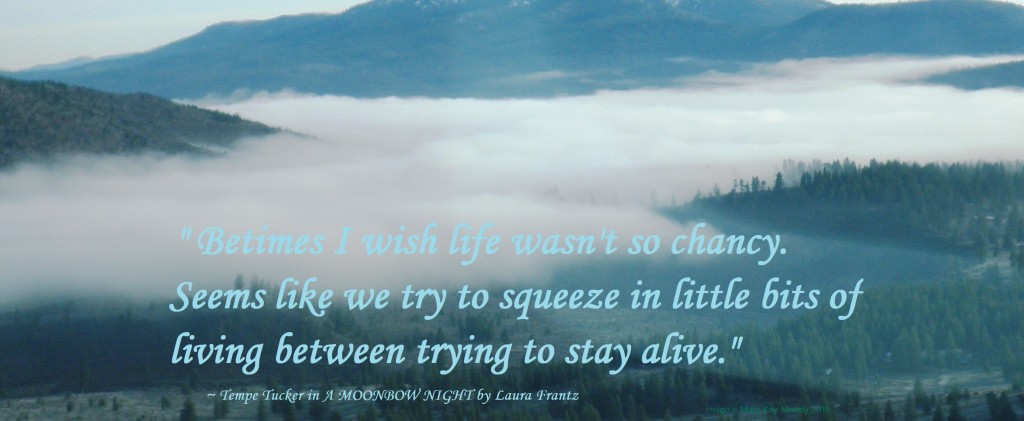 She also captures the unsettledness and danger of 1777, a year of much violence and bloodshed in Kentucky known as “the bloody sevens.” Indian attacks grew more common. Constant vigilance and heightened senses were required. The story shows the toll vigilance takes, and the price of being careless.
She also captures the unsettledness and danger of 1777, a year of much violence and bloodshed in Kentucky known as “the bloody sevens.” Indian attacks grew more common. Constant vigilance and heightened senses were required. The story shows the toll vigilance takes, and the price of being careless.
 Tempe, as expert as any professional guide, regularly finds solace from the past that haunts her by wandering through the woods. But now fewer patrons stop at their inn, and fog settles in. “The lull unsettled her. She didn’t dare venture far with the fog. It seemed to take the land captive whilst scrambling her usually sound sense of direction. Without the sun or North Star as her guide, she felt adrift.” [p 65]
Tempe, as expert as any professional guide, regularly finds solace from the past that haunts her by wandering through the woods. But now fewer patrons stop at their inn, and fog settles in. “The lull unsettled her. She didn’t dare venture far with the fog. It seemed to take the land captive whilst scrambling her usually sound sense of direction. Without the sun or North Star as her guide, she felt adrift.” [p 65]
 “Tempe was struck right then by how chancy life was. Like a spider’s web or an eggshell or a butterfly’s wing. Their world seemed made of little losses. She was always having to say goodbye, part with something. A brilliant sunset. A blossom. A sweet feeling.” [p 182]
“Tempe was struck right then by how chancy life was. Like a spider’s web or an eggshell or a butterfly’s wing. Their world seemed made of little losses. She was always having to say goodbye, part with something. A brilliant sunset. A blossom. A sweet feeling.” [p 182]
And again as Tempe trekked toward a favorite place:
 “A hymn stirred in her spirit. Her mouth opened, then shut. She sensed the meadow wasn’t entirely hers … she felt a cloudiness. Not fear, just a foreboding, a heightening tension. She stepped behind a chestnut, its bulk broad as two men.
“A hymn stirred in her spirit. Her mouth opened, then shut. She sensed the meadow wasn’t entirely hers … she felt a cloudiness. Not fear, just a foreboding, a heightening tension. She stepped behind a chestnut, its bulk broad as two men.
Raven.
He crossed the clearing, moving with an easy grace, gaze turned toward her as if telling her she was plain as a parakeet with its noisy chatter and brilliant plumage. She looked down at her showy skirt, dyed pumpkin orange … Half Chickamauga Cherokee, Raven seemed rootless, restless, living between two worlds, never quite at home in either. Whenever she saw him he was on the move, usually on the Warrior’s Path. But today he was in this very meadow, near her beloved Fairy Rock.
She felt … wronged.
Chafing … she stepped from behind the tree as if to banish any territorial thoughts. This was Indian ground be it anyone’s. She had no special claim … ‘Twas more Raven’s than hers.” [p 70]
 Though the story is set in a turbulent, violent era, and covers many raw, tough days, do not fear it’s a dark and overwhelming story. That all is relieved when Frantz peppers the story with beautiful observations, joyous experiences, noble deeds, glimmers of hope, as well as snatches of humor. In this example Tempe, concerned by the reserve between her brother Russell and her friend (clearly smitten with him) decides to intervene.
Though the story is set in a turbulent, violent era, and covers many raw, tough days, do not fear it’s a dark and overwhelming story. That all is relieved when Frantz peppers the story with beautiful observations, joyous experiences, noble deeds, glimmers of hope, as well as snatches of humor. In this example Tempe, concerned by the reserve between her brother Russell and her friend (clearly smitten with him) decides to intervene.
“Mama, maybe it’s time to give Russell a talking to.”
[Her mother’s] dark brows arched. “What for?”
“Don’t you want some grandchildren?”
“I’d like a wedding first.” [p 95]
Laura Frantz’s skill as a story-teller astonishes me. A MOONBOW NIGHT is filled with accurate historical detail, intricately woven, and beautiful. As a writer, I re-read her novels as a master class on technique. Though I must say studying them to explain details of writing craft feels like an intrusive act that violates their integrity and beauty, much like dissecting a delicate flower or pinning a lovely butterfly.
Thorough research is another of Frantz’s hallmarks. I could fill a page listing the areas she has mastered to give us the verisimilitude in this story—history, tracking, Indian languages, plant/animal knowledge, food preservation, weapons, to name only a few. All that plus her keen observational skills, and familiarity with and love of the region combine to create a world so immediate that a reader cannot help but inhabit it. You will find yourself holding your breath, the hair on the back of your neck tingling as you sense, without knowing why, impending doom. And relief will make your legs go weak when help arrives.
I think the magic of Frantz’s writing (which in my experience is shared by only a few) is that her stories are not so much read as lived.
Visit with Laura on her blog or Facebook or Pinterest. She’ll be thrilled to meet you.
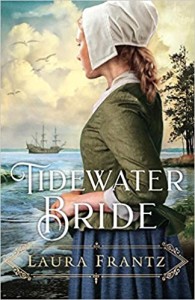
 TIDEWATER BRIDE by Laura Frantz is a pearl of a story, touching on themes of love, sacrifice, cross-cultural understanding and respect, and reconciliation.
TIDEWATER BRIDE by Laura Frantz is a pearl of a story, touching on themes of love, sacrifice, cross-cultural understanding and respect, and reconciliation.
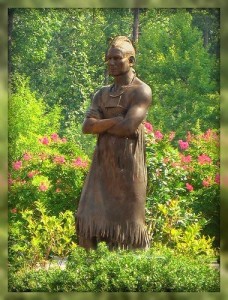
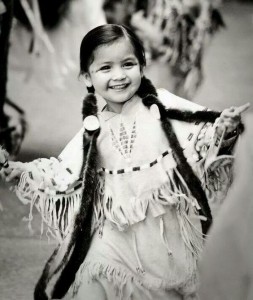 And as always, Frantz has a perfect way of drawing children with their unique viewpoints, sparkling with spontaneity, delight, and generosity, and sharing the joy and distraction of a new puppy.
And as always, Frantz has a perfect way of drawing children with their unique viewpoints, sparkling with spontaneity, delight, and generosity, and sharing the joy and distraction of a new puppy.

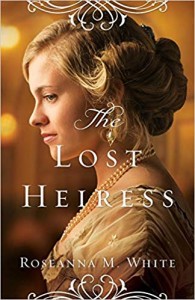
 The moment we meet Brook Eden, her playfulness and audacity invite us to join her. And from page one when she cajoles best friend Justin to teach her to drive the Rolls Royce he’s parked in front of her, we dash off with them on adventures from Monaco to England.
The moment we meet Brook Eden, her playfulness and audacity invite us to join her. And from page one when she cajoles best friend Justin to teach her to drive the Rolls Royce he’s parked in front of her, we dash off with them on adventures from Monaco to England. From inciting incident, to growing trouble, to resolution, White fills the story with surprises, twists and turns like a mountain road. I particularly admire a scene when the family has been praying for a missing member, White gives the reader a glimpse of the amazing, unique way that prayer is answered, while no one in the story ~ even those who are the answer ~ has a clue. Masterful plotting and writing, there and throughout. I highly recommend this riveting tale to fans of historical romance and suspense.
From inciting incident, to growing trouble, to resolution, White fills the story with surprises, twists and turns like a mountain road. I particularly admire a scene when the family has been praying for a missing member, White gives the reader a glimpse of the amazing, unique way that prayer is answered, while no one in the story ~ even those who are the answer ~ has a clue. Masterful plotting and writing, there and throughout. I highly recommend this riveting tale to fans of historical romance and suspense.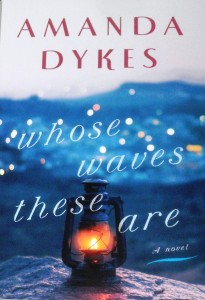

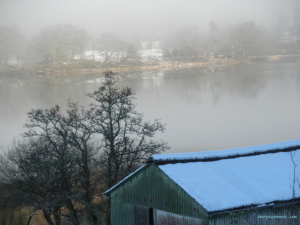 Ansel is a place where God’s presence and provision hovers over the residents like the fog hovers over the coast, and gossip is shunned but residents are not. Each one’s well-being is valued by the townsfolk who see beyond behavior and into a person’s heart, needs, and broken spots—which are handled respectfully and tenderly. Ansel residents help each other find ways to stitch together the rent pieces. In short, it’s a place anyone would like to live in.
Ansel is a place where God’s presence and provision hovers over the residents like the fog hovers over the coast, and gossip is shunned but residents are not. Each one’s well-being is valued by the townsfolk who see beyond behavior and into a person’s heart, needs, and broken spots—which are handled respectfully and tenderly. Ansel residents help each other find ways to stitch together the rent pieces. In short, it’s a place anyone would like to live in. “If everything around you is broken, it’s time to unbreak something.” [p 75]
“If everything around you is broken, it’s time to unbreak something.” [p 75] [conversation Robert observes about a man missing after World War II]“Your husband,” Eva says gently. “He hasn’t returned … yet?” Her wording is hopeful but gentle and Robert wants to kiss her for it. He would have blundered that question a thousand ways. [p240]
[conversation Robert observes about a man missing after World War II]“Your husband,” Eva says gently. “He hasn’t returned … yet?” Her wording is hopeful but gentle and Robert wants to kiss her for it. He would have blundered that question a thousand ways. [p240]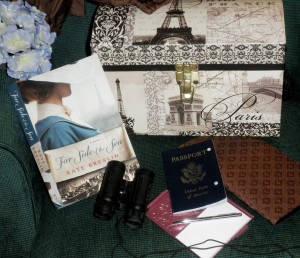
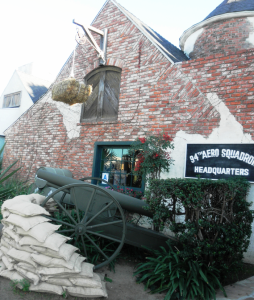 Kate Breslin’s new novel, Far Side of the Sea, is a jam-packed tale set in WW I. It’s a great adventure of spies and espionage that introduces new places and unexplored aspects of a war that was fought in locations besides muddy trenches of France and Belgium. It’s the intriguing puzzle that all good spy movies must be with interesting characters, most of whom we’re only certain if they’re trustworthy at the final, gripping end. The exception, of course, is Lieutenant Colin Mabry who’s been injured already in this war but perseveres in spite of that, proving himself a worthy and admirable hero.
Kate Breslin’s new novel, Far Side of the Sea, is a jam-packed tale set in WW I. It’s a great adventure of spies and espionage that introduces new places and unexplored aspects of a war that was fought in locations besides muddy trenches of France and Belgium. It’s the intriguing puzzle that all good spy movies must be with interesting characters, most of whom we’re only certain if they’re trustworthy at the final, gripping end. The exception, of course, is Lieutenant Colin Mabry who’s been injured already in this war but perseveres in spite of that, proving himself a worthy and admirable hero. I enjoyed reading this, as I have all Breslin’s books. But I had an issue with pacing. At times the story seemed to amble forward rather than charge ahead with the intensity of the life-and-death issues at play. This was only an occasional issue and occurred less often in later chapters.
I enjoyed reading this, as I have all Breslin’s books. But I had an issue with pacing. At times the story seemed to amble forward rather than charge ahead with the intensity of the life-and-death issues at play. This was only an occasional issue and occurred less often in later chapters.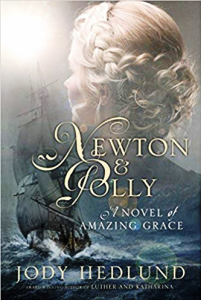
 Hedlund’s rich, detailed descriptions bring the scenes alive. We are immersed in the story world, whether we are pitching about onboard a ship in a dark storm, a raucous bar, a quiet midwinter eve in the forest, a steamy African jungle, or the glowing warmth of the Catlett parlor.
Hedlund’s rich, detailed descriptions bring the scenes alive. We are immersed in the story world, whether we are pitching about onboard a ship in a dark storm, a raucous bar, a quiet midwinter eve in the forest, a steamy African jungle, or the glowing warmth of the Catlett parlor.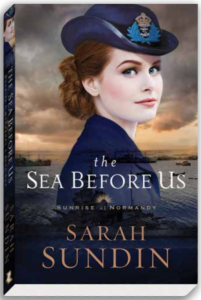

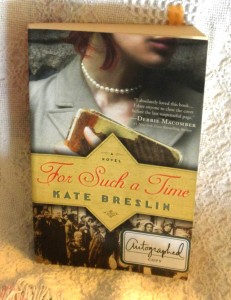
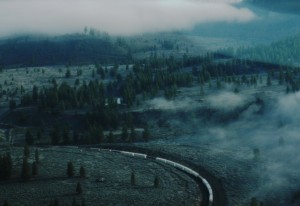 Breslin drops the reader into WW II at Thereseinstadt, the Nazi transit camp in Czechoslovakia, where the cold, starvation, brutality, and hopelessness are portrayed in piercing clarity. (The gift of telling a story that pops off the page and into your living room sometimes doesn’t feel like a gift when what appears is a world such as Thereseinstadt.)
Breslin drops the reader into WW II at Thereseinstadt, the Nazi transit camp in Czechoslovakia, where the cold, starvation, brutality, and hopelessness are portrayed in piercing clarity. (The gift of telling a story that pops off the page and into your living room sometimes doesn’t feel like a gift when what appears is a world such as Thereseinstadt.)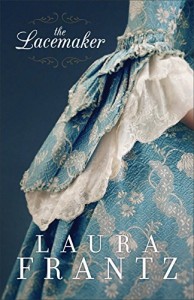 Laura Frantz’s THE LACEMAKER is set in 1775, pot-boiling days leading up to The Revolutionary War, when allegiances were strained and loyalties shifting. And Williamsburg, Virginia seems at the center of it all.
Laura Frantz’s THE LACEMAKER is set in 1775, pot-boiling days leading up to The Revolutionary War, when allegiances were strained and loyalties shifting. And Williamsburg, Virginia seems at the center of it all.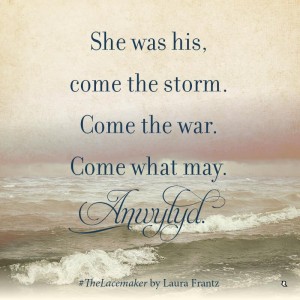 This is one of Frantz’s most overt romances and it works very well. The object of Elisabeth’s affections, the master of Ty Mawr estate and Independence Man Noble Rynallt, is a hero beyond expectation! The barriers to any relationship for these two are huge. When they seem insurmountable, I expected to leave the story with only bittersweet memories and the echo of Anwylyd. But noble sacrifices, exactly what one expects from a larger-than-life hero, emerge out of nowhere and bring sighs and hope and, as Frantz always promises ~ hints of HEA (happily-ever-after).
This is one of Frantz’s most overt romances and it works very well. The object of Elisabeth’s affections, the master of Ty Mawr estate and Independence Man Noble Rynallt, is a hero beyond expectation! The barriers to any relationship for these two are huge. When they seem insurmountable, I expected to leave the story with only bittersweet memories and the echo of Anwylyd. But noble sacrifices, exactly what one expects from a larger-than-life hero, emerge out of nowhere and bring sighs and hope and, as Frantz always promises ~ hints of HEA (happily-ever-after).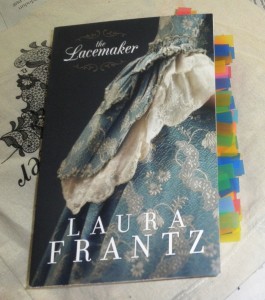 Oh, Elisabeth, I want to hug you and walk you to a place of respite. Dear reader, don’t you?
Oh, Elisabeth, I want to hug you and walk you to a place of respite. Dear reader, don’t you?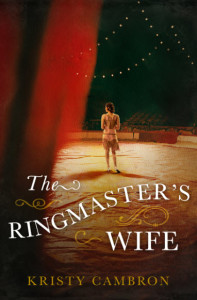 In The Ringmaster’s Wife, Kristy Cambron takes us deep into the rapidly-changing 1920s with young ladies Mable and Lady Rosamund as they carve out lives of their own choosing, following their own dreams.
In The Ringmaster’s Wife, Kristy Cambron takes us deep into the rapidly-changing 1920s with young ladies Mable and Lady Rosamund as they carve out lives of their own choosing, following their own dreams. Whether the reserved air of an English nobleman’s estate or the flamboyant life of the circus, Cambron creates a story world that sizzles with life. She has an uncanny ability to choose a golden-nugget detail that conveys the essence of a character, a place, a time. Each line brims with insight into both observer and observed. For example:
Whether the reserved air of an English nobleman’s estate or the flamboyant life of the circus, Cambron creates a story world that sizzles with life. She has an uncanny ability to choose a golden-nugget detail that conveys the essence of a character, a place, a time. Each line brims with insight into both observer and observed. For example: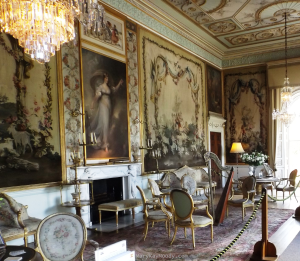 Have we any doubt how Rosamund and her mother relate?
Have we any doubt how Rosamund and her mother relate?

 Whew. What a journey. I just returned from an arduous trek, blazing a trail thru untamed mountain wilderness of Kentucky. The doctors and lawmen back in Virginia could not help us with catastrophes there. But we enjoyed gifts along the way ~ like when lush moonlight “silvered the woods and river.” And the “hallowed, heavenly magic … a star shower.” The moonbow rose from the mist of the falls, spanning the river, bands of white streaked with red and indigo and pale green, “vivid against the froth of the falls.”
Whew. What a journey. I just returned from an arduous trek, blazing a trail thru untamed mountain wilderness of Kentucky. The doctors and lawmen back in Virginia could not help us with catastrophes there. But we enjoyed gifts along the way ~ like when lush moonlight “silvered the woods and river.” And the “hallowed, heavenly magic … a star shower.” The moonbow rose from the mist of the falls, spanning the river, bands of white streaked with red and indigo and pale green, “vivid against the froth of the falls.”
 I ache with the walking and carrying supplies. My mind and senses cannot rest after months of being alert to any subtle change. Getting lazy in observing allows death to strike. I wonder if I will ever settle, not react to every slight sound. Every variance of breeze or temperature or color of the sky …
I ache with the walking and carrying supplies. My mind and senses cannot rest after months of being alert to any subtle change. Getting lazy in observing allows death to strike. I wonder if I will ever settle, not react to every slight sound. Every variance of breeze or temperature or color of the sky …







